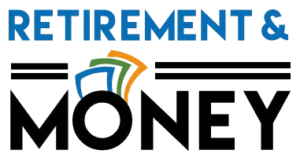Is there a death tax in Australia? In this episode, Rob discusses superannuation death benefits and in particular taxation for non-dependants. The death tax no one is talking about!
This is Rob Laurie, and welcome to retirement and money where we aim to improve the quality of your retirement. Death and taxes, as many common versions of the saying go, there is nothing certain in life, but death and taxes. But what about death taxes? Is there a death tax in Australia? What is not so commonly known is that Australia actually introduced death duties around 1914, and that legislation was only abolished in 1979. So Australia doesn’t have a death tax right now. Well, not exactly, but let’s talk about taxation on superannuation death benefits, particularly for non-dependents – an exciting topic, no doubt.
Now, according to the ATO website, when a person dies, in most cases, their supervisor pays the remaining super to their nominated beneficiary. A super paid after a person’s death is called a super death benefit. So we spoke about beneficiaries in previous episodes. But what we need to understand as well is that superannuation law sets out who a death benefit is payable to, so it’s one set of rules and taxation law sets out how the benefits will be taxed. As is the way with multiple pieces of legislation, they’re not always exactly the same. In this case, they aren’t. So who’s dependent on the superannuation law is different to who is a dependent under taxation law. Now, the biggest difference is in regards to children. Under superannuation law, children of the deceased of any age can be dependents. On the taxation law, children of the deceased are under 18 years old. So what a difference, which has far reaching consequences.
So there are other factors at play there with regards to dependency relationships and so forth, which can mean that children can fall into that, particularly if they are disabled children, for example. But generally speaking, adult children are not under taxation law, considered dependents. Now, the way that superannuation death benefits are taxed depends on whether the recipient is considered a dependent or a non-dependent. Now, if the recipient is considered a dependent of the deceased and they receive it as a lump sum, it’s that they don’t pay tax on it is tax free. Now, if they receive it in an income stream and depending on the age of the person deceased, the age of the person receiving it then can be partially taxable in a similar way to super death benefit received by a non-dependent in different tax rates, but going through the taxable, taxed and taxable untaxed elements. If you are not a a dependent of the deceased, work out how the super payment you will be taxed, you need to know how much of the money in the super account is in a tax-free component, taxable component that has the super provider has paid tax on super paid tax on and how much is in the taxable component that the super provider has not paid tax on. So the tax-free component is taxable tax and taxable untaxed.
This information can be provided via the super fund. They know it. It’s not printed out in any statements or anything like that generally, but it’s a common question that will get particularly from financial advisers when we’re doing a plan like that to understand what the holdings of a particular client are.
So on tax-free super, you don’t need to pay tax on the tax free component of the death benefit. So if, for example, if this example here will say that it’s been left to adult children who are not financially dependent, which is frequently the case on the tax free component, they don’t pay any tax on it. Now, how to get a tax free component in super would generally come as a result of making non-concessional contributions, so bringing lump sums in there they’ve already had tax paid on it will build up the tax free component of the super fund. If somebody’s never done that, generally, all the super funds are going to be taxable. Ok, now, how much tax will the beneficiary be paying on the proceeds on this superannuation death benefit.
On the taxable taxed element, they pay either marginal tax rate of 17%, including Medicare levy whichever is lower. This is according to the website, as at February 2022. On the taxable untaxed element, they pay the marginal tax rate of 32% whichever is lower. So depending on the marginal tax rate of the beneficiary depends on how much tax they pay. Now, Non-dependent cannot receive the proceeds as an income stream, they must take a lump sum there as well. Ok, now, when taking money out of super in pension or superannuation accumulation phase, when it’s in the pension phase, you can take it tax-free when you’re over 60 as well.
So if you’ve retired permanently under 60, you can access your superannuation in the pension phase tax-free. But you can’t draw it out, just the taxable component first, for example, if you had a fund that was 80% taxable, 20% tax-free, you can’t choose to take that 80% first, it comes out proportionately. Now, where this might be a consideration is if you’re expecting to have some proceeds left for your time after you die. So, for example, if you had an investment property and $500000 in super, so you were drawing that down and projections are showing you’re likely to have $250000 left by the time you raise your life expectancy. Now, what you might choose to do is if you sold that investment property and you’ve got 500000 cash, you could choose to add that to your super fund. Now what that would do is if you use another super fund of $500000 was like 80% like mentioned before. So you’ve got about $100000 tax-free, 400000 taxable and then you put 500000 into it, which you can’t do, you can put 250000 to up to 330000 bring bring forward rules, split it for two people you put 250000 into it. Okay, so that 250000 will go onto the tax-free component. So now you’ve got 350000 tax-free, 400000 taxable. Yeah, but you still can’t change where you’re drawing it from. As that fund grows, investment returns will make up the taxable component.They don’t increase the tax-free component. One strategy that can be employed is sometimes you can have a second super fund, for example, and you would add that $250000 to it. So yes, you’re paying additional fees for having another fund open or admin fee and all that sort of stuff. Then you have to work out what’s going to be better for you.
Generally, it’s not a huge amount of money. By having that $250000 in a separate fund, you could choose to not draw down money on that fund. As far as you do, if you have turned into a pension, you do have to take a minimum pension unless sort of stuff, but could choose to take the bulk of your proceeds from a taxable component. By keeping that separate, it gives you a little bit more control over that. So you have the five hundred thousand you draw most of your money out of that. And then when you pass away, if you happen to have $250000 left over in this super fund, any growth that’s had form a taxable component about that 250000 you’ve managed to keep it a little bit separate, so it will have a bit of an impact on your statement.
Now there is some new superannuation laws which have been passed just recently in February 2022, and some of that is in regards to opening up some re contribution strategies so things like you can do downsizing contributions, but also increasing the age until you have to make the work test it used to be 65 recently increased 67. Now it looks like it’s gone to 74 once a year under 75, effectively from July. So that means there is potentially time to take money out of superannuation and really contribute it as a way to reduce the taxable and nontaxable component of the fund. So as an example of that, if we didn’t contribute at $250000 and trigger bring forward rules and that sort of stuff, you only get one crack at that every three years. Or let’s say it’s been three years and we’ve opened up and we’ve got the non-concessional cap available to use again could potentially take out of that $500000 fund, let’s say $330000, you’re using it down to 170, 80% of 170s – I don’t know. We’ll call it 27 grand, something like that I’m guessing. That amount is going to be the tax free component with the rest of it taxable. So you’ve got, you say, left 150000 that’s taxable in the fund. Take that 3.38 where you contribute it because it’s non-concessional that pay tax or anything like that on it. You do have issues with regards to buy, sell spreads and time out of the market, that sort of stuff, but that would reduce the taxable component on that fund from 400000 down to 150000. If we’re talking, say, 17% tax rate on the difference, which is about, what, 250000. It’s gonna be $45000 better off for you. Adult children receiving the funds.
Once again, this is complex. Seek financial advice. Everyone’s circumstances are different. I’m just giving examples of some things that could possibly be beneficial under certain circumstances and not taking into account your personal circumstances. Now, just getting rid of the common perception that you need to have only one super and you should never have more than one Superfund. That’s not always true. Now, another strategy of reducing tax on superannuation death benefit proceeds is what we call the death bed strategy. So that’s cashing out super funds on your deathbed. It does have holes in it, especially if you’re under 60 and haven’t met condition of release, you can’t pull it out as you haven’t meet the conditions of release. Let’s say you meet a condition of release, for example, likely to pass away from a terminal illness, you pull your money out. Yet you’ve got limits on how much money you can put back in and all that sort of stuff. And then there’s also timing. You may not get time, so a lot of times people will die in an accident. That strategy is not going to work if it’s an instant death.
Ok, so that rounds off death and taxes just once again. Seek advice from a qualified estate planning lawyer and seek financial advice before implementing any of these strategies. Thanks for listening, and I hope you enjoyed this episode. And remember, you can’t go back and change the beginning, but you can start where you are and change the ending. Retirement and Money is brought to you by Wealth Factory. Wealth Factory provides specialist financial advice to tradies and business owners to ensure their retirement dreams are delivered. For more information, go to wealthfactory.com.au. Wealth Factory is an authorised representative of Lifespan Financial Planning Limited AFSL 229892. The purpose of this podcast is (to) provide factual information only. It is not intended to be financial advice. However, any advice provided is general in nature and does not take into account your objectives, financial situation or needs. You should consider what advice is suitable for you and your personal circumstances. Please speak to your financial advisor before making any financial decisions.

